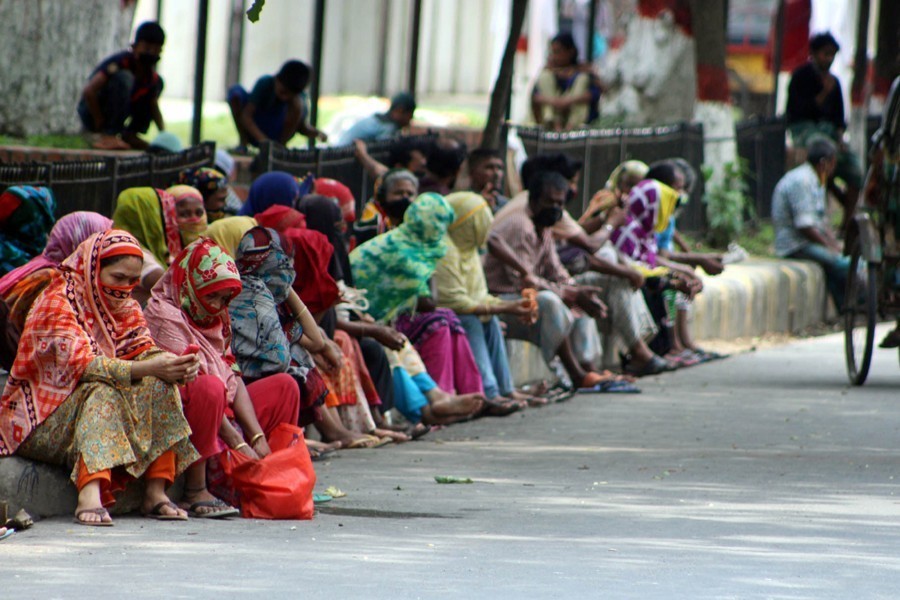
Published :
Updated :

The twin shock of corona virus and the post-Covid phenomenon of unrestrained food price spiral has increased poverty, widened income disparity and worsened food insecurity forcing many families to change food habit during the past one year. Two studies carried out in 2018 and 2023 by a local economic think tank, South Asian Network on Economic Modeling (Sanem) and the UK's University of Manchester-based Global Development Institute (GDI) have come up with these findings.
Notably, the food price inflation struck the low-income population exactly when they were trying to recover from the scourge of the pandemic. The most exposed to the food inflation shock were, as the studies found, the urban poor whose share rose from 16.3 per cent in 2018 to 18.7 per cent in 2023. Interestingly though, during the period under study, rural poverty rate rather declined by 2.9 percentage points from that that of 24.5 per cent in 2018 to 21.6 per cent in 2023.
These results, however, differ from the urban upper poverty rate of 14.7 per cent as found by the Household Income and Expenditure Survey (HIES) of the Bangladesh Bureau of Statistics (BBS) published in 2022 when food price inflation was not as severe as it was in 2023. However, using its multidimensional poverty index measurement method, Sanem found that the urban poverty rate which was 16.8 per cent in 2018 had climbed to 18 per cent in 2023.The variations in poverty figures depending on methodology and timing of the survey aside, the cruel reality is that 70 per cent households are opting for foods that would just fill their stomach. Obviously, what is being compromised here is nutritional quality of their dietary intake. At the same time, more than one third (35 per cent to be precise) of those families had to cut non-food expenditures, 28 per cent resorted to borrowing money while the poverty ate into the savings of 17 per cent of families. An overwhelming majority of the households saw their income level either remaining stagnant, or worse going further down. As a result, compared to 2018, the extreme poor families had to cut expenditure by 20 per cent per head. That means they have been skipping meals.
These changes in food consumption patterns point to growing food insecurity. Going by the research statistics, poor families ( 32 per cent) in urban condition are worse off compared to those in the rural areas (at 29) per cent, but it is purely a matter of degree. The fact remains that stagnation or the lack of income in tandem with ever-escalating food price inflation has hit the country's poor hardest. When having a round square meal a day is at stake for these poor families, whether they are in cities or villages, other basic issues like going to a doctor for treatment, sending their children to school, etc., become a luxury. More so because between 2018 and 2023, thanks to the rising inflation, public health expenditures have increased threefold.
As a corollary of the worsening poverty condition, in 2023, 15 per cent of the children aged between 5.0 and 15 of the poor families have stopped going to school, though five years back the dropout rate was 13 per cent. Against this backdrop, the government, alongside adopting effective measures to tame inflation, must urgently intervene and widen the coverage of social security net programme in order to protect those in dire need.


 For all latest news, follow The Financial Express Google News channel.
For all latest news, follow The Financial Express Google News channel.